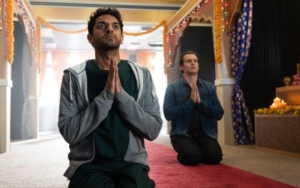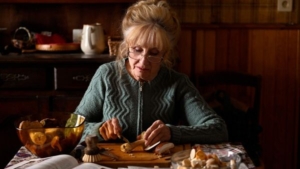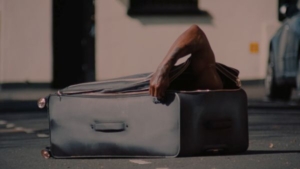Though the jacket image of Shere Hite’s 1976 book, The Hite Report: A Nationwide Study of Female Sexuality, was vaguely familiar to me, I admit I knew very little about the book, nor its author, the subject of Nicole Newnham’s deft and captivating documentary. Alongside James LeBrecht, Newnham co-directed 2020’s moving and eye-opening Crip Camp. With humor, wistfulness, and intelligence, both documentaries brilliantly express vital yet culturally buried moments and figures from the recent past: the feminist studies of Hite and her subsequent withdrawal from American life and the 1970s fight for disability rights.
The Hite Report sold roughly 50 million copies, but it remains somewhat obscure, especially to generations born after its publication. However, its impact has been lasting. Culled from anonymous responses of questionaries by thousands of women across America, Hite’s study’s most significant finding was that women were able to orgasm without sexual intercourse with men. This discovery seems obvious to many today, but back then, as Newnham’s documentary adroitly traces, it elicited a strong reaction and backlash from men, the media, and even the scientific community. It also affirmed that women were often dissatisfied with both their love and sexual lives, that they had been unfaithful, and in a particular blow to the straight male’s ego, that they didn’t need to depend upon men for sexual pleasure. (Over 95 percent of women reported that they faked orgasms.)
As the film clearly outlines, Hite was sex positive, with hopes that her findings could illustrate the ways in which men and women could have more fulfilling sex lives together, while also pushing against sexism and prejudice in academia and outdated studies on sexuality. If Hite was considered dangerous, she retorted, “Equality doesn’t seem dangerous to me.” Her 1981 follow-up, The Hite Report on Male Sexuality, was more controversial. Again, its findings come across as somewhat routine today, but blistering back then, with men reporting their isolation, insecurities, and dissatisfaction. Hite received significant pushback, with maddening clips of television talk shows where all-male audiences venomously attacked her studies, as if she skewed the data and made everything up herself.
Newnham does not skirt over the fact that Hite was a pale, statuesque beauty with flaming, curly red hair, who often donned fur coats and fine clothing. Abandoned by her parents as a child, she eventually worked as a model to make her living in New York, posing for Playboy and a James Bond poster. Perhaps because she seemed so physically desirable, it made her studies even more threatening to men. Photographs from Hite’s career would later come back to undermine her as an expert and a researcher in the eyes of the media and the public. (Her diaries are narrated by Dakota Johnson with crisp precision and a sense of strength, but also fragility. The same could be said of Lisbeth Scott’s delicate string score.)
As the decades wore on, there didn’t seem to be much of a place for Hite in the public sphere. After numerous difficult media appearances, some of which Hite brazenly chose to do to challenge her adversaries, her publisher began to scale back her publicity and visibility. (There is eerie footage of the Clarence Thomas hearings and the ensuing waning of feminism in the 1990s.) In the mid-’90s, Hite renounced her American citizenship and relocated to Europe away from the negativity of politics and the American press. It’s here where Hite’s disappearance really begins, and the missing of her much-needed voice. Newnham’s well-assembled, fascinating picture is an elegy for Hite, but also a bracing reclaiming of Hite’s story, offering renewed interest in her and her landmark achievements.

















Leave A Comment